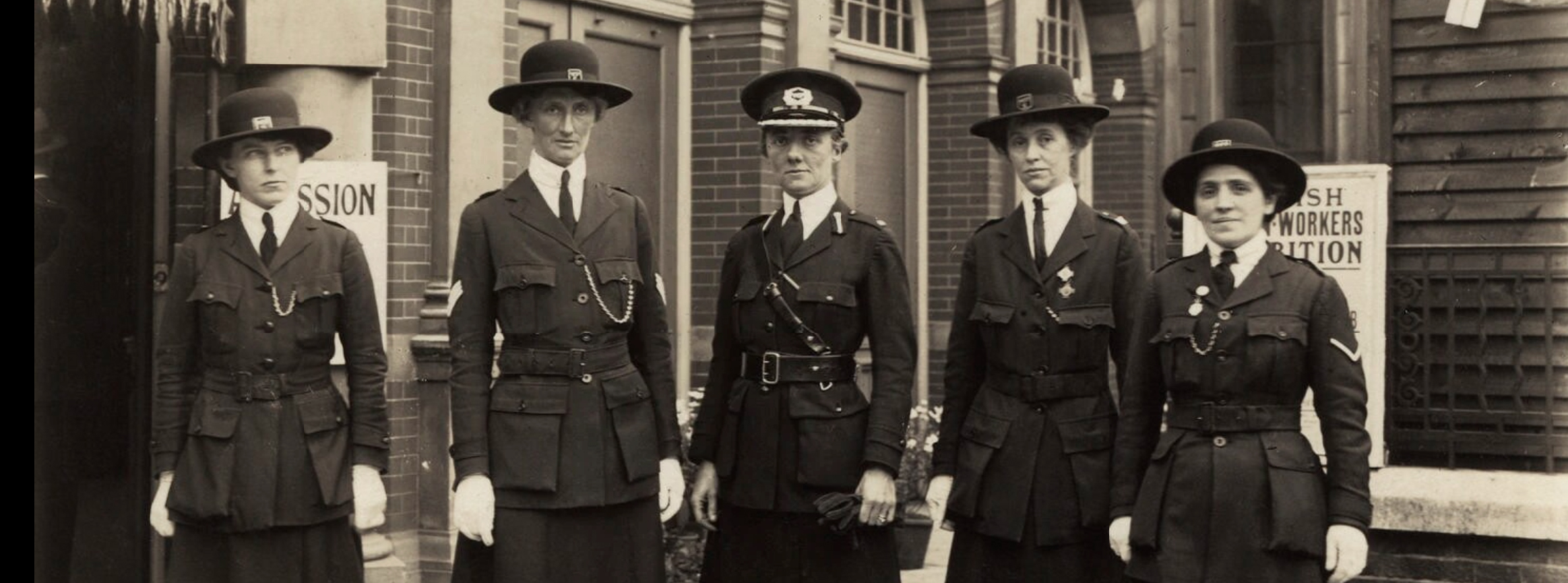
Since her first book, Full Surrogacy Now: Feminism Against the Family, philosopher Sophie Lewis has been thinking about how abolition could radically improve society, all the way down to the level of the individual household. In her latest book, Enemy Feminisms: TERFs, Policewomen, and Girlbosses Against Liberation, she explores how a rogue’s gallery of feminists on the political right illustrates the point that there is nothing intrinsically liberatory about feminism: It would be theoretically possible, for example, to have equality for women within a fascist state—and many feminists have indeed fought for precisely that.
This is an invaluable intervention in the context of the fight to end mass incarceration, given the role that so-called carceral feminism has often played in strengthening the U.S. punishing apparatus while also underwriting the claim that amplifications such as mandatory arrests embody progressive values. In the following conversation, Lewis talks with legal scholar Aya Gruber, one of the most cogent critics of carceral feminism, about the overall project of the book and how its insights can steer the work of seeking true liberation for all.
Aya Gruber: I’ll start by asking you the most general question: What is an enemy feminism? Could you give us an example?
Sophie Lewis: An enemy feminism, as I’ve formulated it, is a form of gender-emancipationist ideology or organizing that is not not feminism, but which is dedicated to anti-liberatory aims in many different ways. My most eye-popping examples come from the Ku Klux Klan and the British Union of Fascists. These are very stark examples that people don’t expect; I think most people never imagine there could be such a thing as KKK feminism or fascist feminism. And yet there is, actually: these were organizations that in the nineteenth and early twentieth centuries were widely accepted to belong to the radical wing of feminism. In fact, when Alice Paul first introduced the Equal Rights Amendment in 1923, the only religious organization to support it was the Pillar of Fire Church, at the time affiliated with the Klan. Church founder Alma White, the first ordained female bishop in the United States and ideological head of Klan theology, was quite a fire-breathing radical feminist.
But you don’t have to go to the literal, self-described fascists for examples of enemy feminisms. If we look into the archive of mainstream liberal feminism, we find people like May French Sheldon, a fabulously rich colonial adventurer and progressive who was one of the first feminist celebrities in the United States. During the late nineteenth century, Sheldon made a number of highly publicized trips through eastern and central Africa, following which she lectured widely about her travels, and became a lecture circuit pinup for many undergraduate U.S. suffragist women. This was a women’s voting rights radical and wildly popular independent girlboss-type. And, uncomfortably for us, her ideas about women’s power and women’s emancipation were inseparable from her ideas about racial order; they were the same ideas. For her, preserving hierarchical relations between white and Black “races” was what feminism was for. Her interventions into imperial practice cannot be disconnected from her suffragism: she was funded by both King Leopold of Belgium and the Free Congo Campaign to travel around Africa, using her “feminist expertise” to explain why gender enlightenment in the local population was “surprisingly” advanced in Tanzania, for example, but outright impossible in the Congo.
This was feminist racism, meaning feminism-as-racism, not merely “white feminism” in the way that the latter phrase is sometimes defined (i.e., feminism that is a bit shortsighted or is leaving certain groups out). My own commitment to feminism has been central to my life for as long as I can remember, so I have a particular desire to acknowledge that feminism has never been a unified front. On the contrary, feminism is so disunified that it contains within itself its own enemies! I’ve come to realize that there’s not even a single origin story for feminism, because there’s never been agreement within feminism on what women are, let alone what women need.
More from our decarceral brainstorm
Inquest, finalist for the 2025 National Magazine Award for General Excellence, brings you insights from the people working to create a world without mass incarceration.
Sign up for our newsletter to get the latest in your inbox every Saturday.
Newsletter
AG: It seems like one of the things you’re arguing is that feminists have entirely too much faith in women simply because they are women, and are not applying the scrutiny that’s needed. For example, when women wield the carceral power of the state and the dominant discourse seems to be: Well, they’re women, so they’re going to do it responsibly.
SL: Right. That idea, whereby “woman” has a categorical moral superiority of some kind, has never been without its own shadow. There’s always been a racialized other to that construct of woman—the “unwoman” who needs to be saved from herself because she is unrepentant for her fallenness. In a sense, the story about the naturalness of a woman’s moral character betrays itself, because there is a disciplinary structure to that ideal. It pretends to be descriptive of nature, but it’s actually prescriptive: “If you are not like this, then you are not really a woman.”
AG: A core issue you identify is the belief that achieving “women’s equality,” even within oppressive systems like the racialized U.S. prison system, will inherently make the world better. Take the demand for equal prosecution of violence against women, despite the reality that most violence targets men and often goes unpunished. The idea is that even within a flawed institution, feminists can make it fairer. But your book shows this doesn’t happen. Simply adding women to policing or prisons doesn’t reform them. Can you talk a little bit about that?
SL: I’d love to hear your take on this too, Aya! Your work has shaped my own thinking on this. For my part, my book underscores the futility of feminists seizing state power: Enemy Feminisms is not a manifesto with policy proposals. Yet I suspect we’ve arrived at similar conclusions from different angles. What does it mean to fantasize, like 1980s-era anti-porn crusader Catharine MacKinnon, about wielding state violence for women’s protection? Can we really salvage anything from some of the statists who figure prominently in my book as examples of “enemy feminisms”? Because of your question, I’m thinking here in particular of Mary Sophia Allen (whose picture is at the top of this page), the butch, uniformed leader of paramilitary feminists fighting “vice,” who was first a majorly militant suffragette activist under Emmeline Pankhhurst, prior to serving as a volunteer police officer in World War I munitions factories, and later becoming an icon in British fascism.
AG: Allen’s story fascinates me because I’m drawn to people who defy stereotypes—it feels like a rejection of rigid gender categories. That’s why I’m so baffled by transphobic feminists: they claim gender divides oppress women, yet police those divides harshly. I think what you highlight so well in your account of Allen’s life is that when women are participating against stereotypes in these fascistic, militarized, carceral spaces, they become more of that. They start by saying, “Look, I can do this too”—which has, I think, some radical gender undertones. But that very impulse to be part of those institutions also ultimately makes it impossible to fight against them in any meaningful way.
What your book reveals is that women entering these authoritarian spaces don’t subvert them—they often amplify their worst traits. Take domestic violence reforms: feminist advocates didn’t just demand equality within policing; they pushed for mandatory arrests, dismantling community-based alternatives and making the system even more punitive. I see this pattern throughout your work: well-intentioned, even radical impulses to challenge stereotypes end up reinforcing the very institutions they enter.
SL: I’d push back slightly on the assumption that female masculinity inherently resists oppression. Allen’s story complicates that. She is someone we can understand through the lens of transmasculinity—I’m thinking of her penchant for being called “Commandant” and “Sir”—yet her autobiographies (Woman at the Crossroads, The Pioneer Policewoman) emphasize her femaleness. It’s a seeming paradox, I grant, but she was paying homage to cisness and patriarchy even as she did male drag.
Elite maternal feminism has often made space for a controlled, asexual lesbian butchness—think of Frances Willard, the president of the Woman’s Christian Temperance Union, for example—one that avoids transphobic punishment while enforcing gender conformity in others. Allen herself reveled in decadence among aristocrats but imposed draconian morality on working-class women: removing babies from sex workers, enforcing heteronormative factory dress codes.
This replicates colonial logic: “enlightened” women, often white and privileged, could live unconventionally while teaching colonized women to conform to rigid ideals of “womanhood.” Feminism’s paradox is that its vanguard often crafts a liberated gender identity for themselves—one never meant for universal application. In fact, many feminist activists, historically, were more invested than most in preserving and refining “eugenic” sexual dimorphism at large, even as they refused the traditional feminine division of household labor in their personal lives. I am often reminded of these ironies when I encounter Lean In–style capitalist feminist discourses today, whose prescriptions for white-collar women depend, silently, on the continuation of wider divisions of labor that enlist racialized pink-collar women to clean, nurse, and nanny.
AG: We have a wealth of evidence of feminist programs going into state institutions and using the master’s tools not to dismantle the house—it’s been going on for hundreds of years. The stories you tell in your book expose and counter the persistent myth that feminists pursuing equality within these systems is liberatory for women. Still, we continue to see this idea that if we just add more women to the police force or have more women prosecutors, we’re going to have a criminal system that’s equal, fair, good for women, and non-racist. Why hasn’t that changed in 200 years of feminism?
SL: Time and again, when feminist struggles enter phases of rapprochement with the state, they throw Indigenous, “deviant,” Black, sexualized, sex-working women and other gender minorities under the bus. As you say in your book The Feminist War on Crime, Aya—about women’s liberation’s surprising role in the rise of the carceral state—there are left-wing versions of state feminism, too, which demand things like mandatory arrests and harsher sentencing for pimps, rapists, and domestic abusers. Many of these carceral escalations were voiced by credentialed anti-capitalists such as Andrea Dworkin and, less so, MacKinnon. Though Dworkin and MacKinnon focused almost exclusively on sexual violence, we could also include childcare subsidies, child credits, parental leave—social democratic policies that absorb feminist energy into the state. Scholarship shows that state feminist social democracy actually privatizes care, shoring up the private family household as a unit of social order, in a way that is detrimental to gender liberation.
AG: I feel like feminists—and maybe I’m putting too much emphasis on that moment of second-wave feminism—were able to quit a lot of things: as you said, they could even quit capitalism, like Dworkin. But they could not quit policing, jails, and punishment. Why not?
SL: Well, to be fair, at the same time feminists have given us an incredible wealth of anti-carceral, anti-statist, abolitionist thought as well: think of Audre Lorde, June Jordan, and Leslie Feinberg. Again, I think we have to understand that several different things have the name feminism, and some want the opposite of others.
Some feminisms insurgently oppose privatized care and support liberating children and communizing life-making labor. This was the vision of feminism that socialist philosopher Charles Fourier had in mind when he coined the term (féminisme in French) in 1837. But it is English philosopher Mary Wollstonecraft who tends to get credit for “founding” feminism with her 1792 book A Vindication of the Rights of Woman, though Wollstonecraft never uses the term itself. But Wollstonecraft’s politics were nearly the opposite of Fourier’s: she wanted rational bourgeois authority vested in mothers’ hands within the family without changing much about the world. She wasn’t interested in transforming the lives of servant women, proletarian women, houseless women, Indigenous or enslaved women—only those subject to the bourgeois household’s gender division of labor. This bifurcation at the moment of feminism’s origin—where one founder wants to keep world institutions, just infused with maternalism, and the other says we must abolish everything for women to be free—is never actually resolved and it helps to explain the irreconcilability I address in Enemy Feminisms.
For my part, I pick Fourier’s version; it has a persuasive case behind it. Gender is a technology of work, and we don’t get free by securitizing little enclaves of gender oppression. We, as left feminists, can set our sights beyond social democracy, beyond the wage and the family—even beyond the state. Abolition must also undo the private nuclear household structure, not because people don’t want to live together through kinship bonds, but because organized scarcity violently binds us in familial administrative modes under capitalism. This is part of the interlinked oppressions abolition must unravel.
Ultimately, this is what feminism means to me: a critique big enough to encompass work, race, sexuality, ecology. Feminism, as a label, is one I refuse to give up on. I don’t want to be evicted from feminism by the securitizers and the femonationalists and the pornophobes.
Image: Mary Sophia Allen (center) with four members of her force by Christina Broom; bromide print, 1916; NPG x6075; © National Portrait Gallery, London. Licensed under CC BY-NC-ND 3.0.


